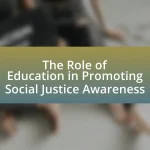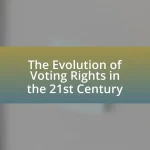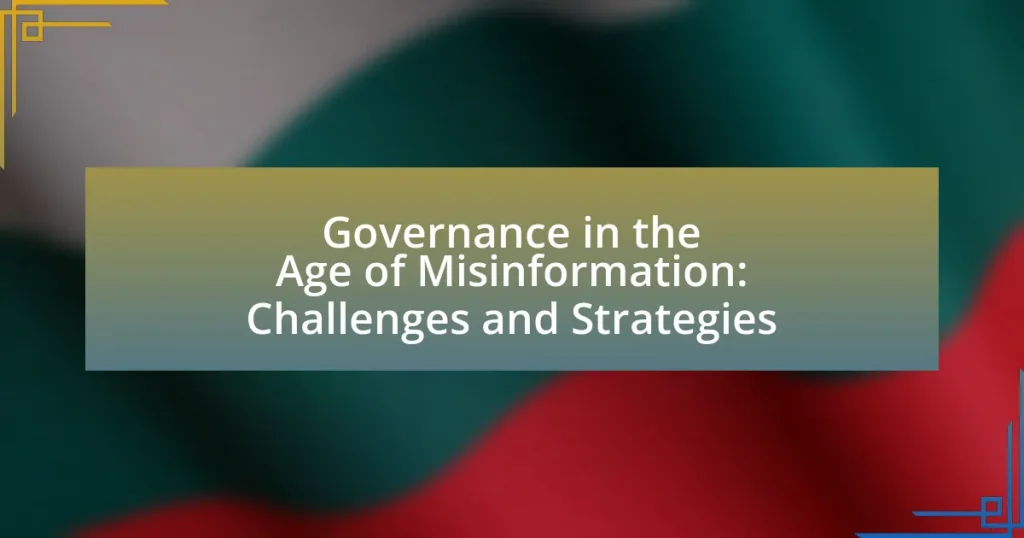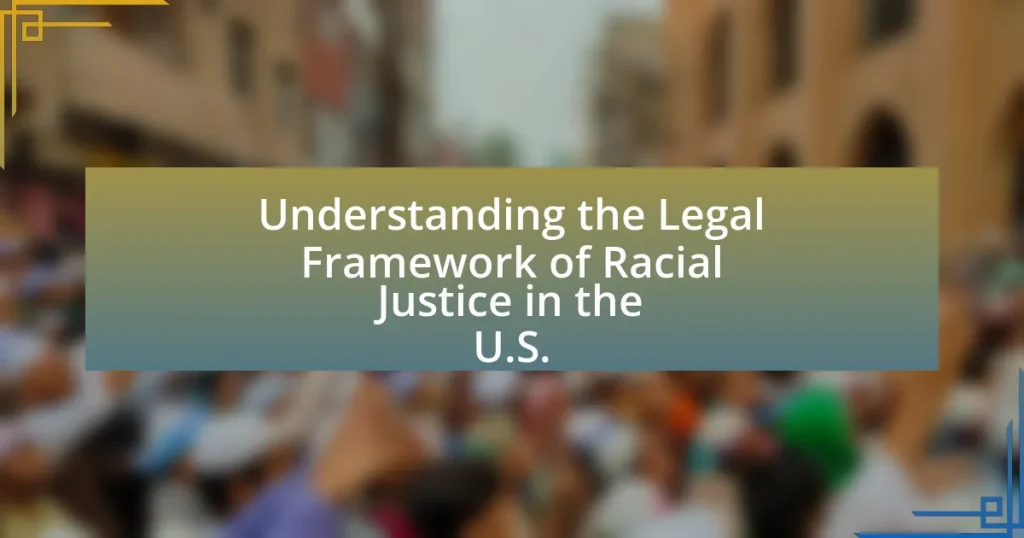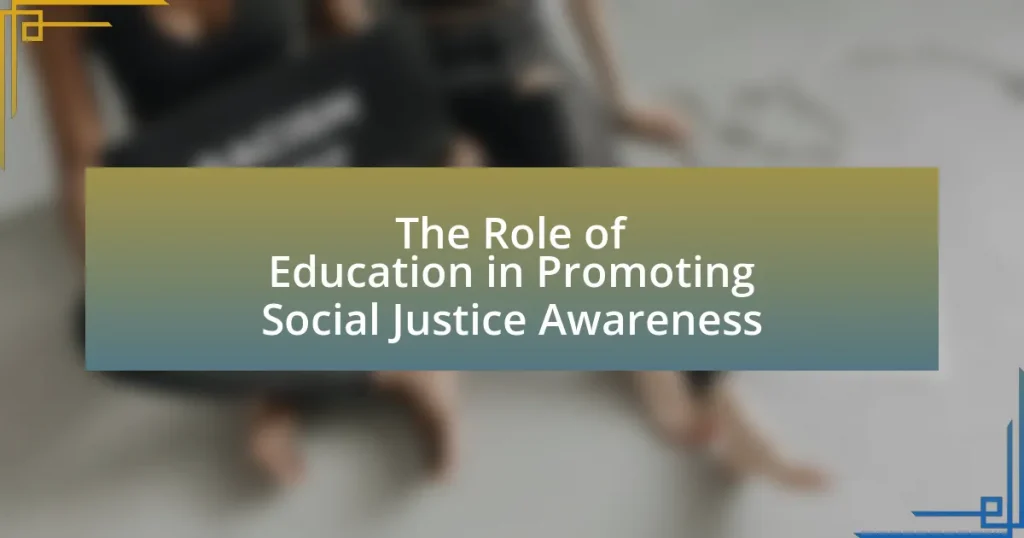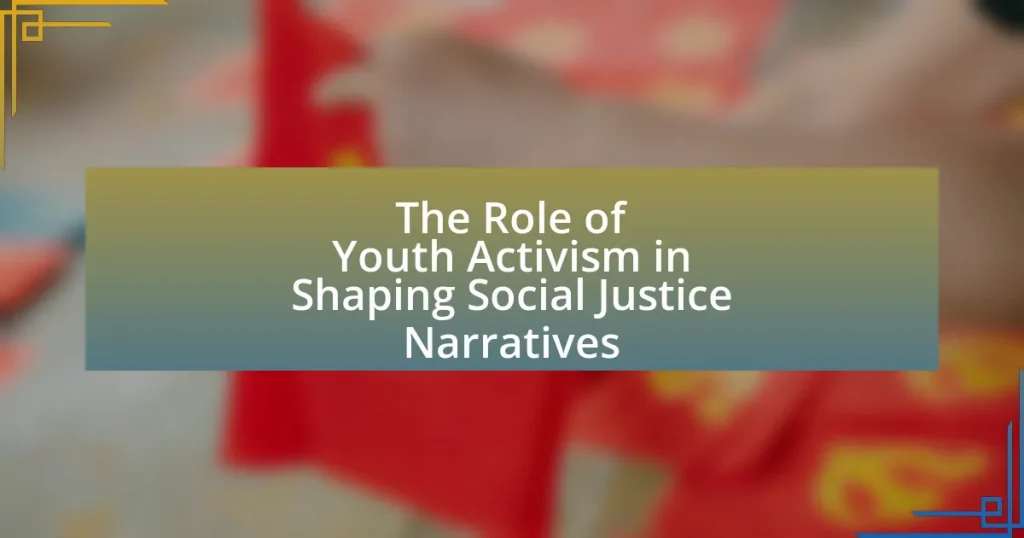The article focuses on the challenges of governance in the age of misinformation, highlighting issues such as the erosion of public trust, difficulties in regulating digital platforms, and the rapid spread of false information. It examines the psychological effects of misinformation on citizens, its influence on political polarization, and the implications for effective policy-making. The article also discusses strategies to combat misinformation, including enhancing media literacy and collaboration among stakeholders, while emphasizing the role of technology and social media in governance. Key takeaways for policymakers include the importance of transparency, collaboration, and education in addressing misinformation effectively.
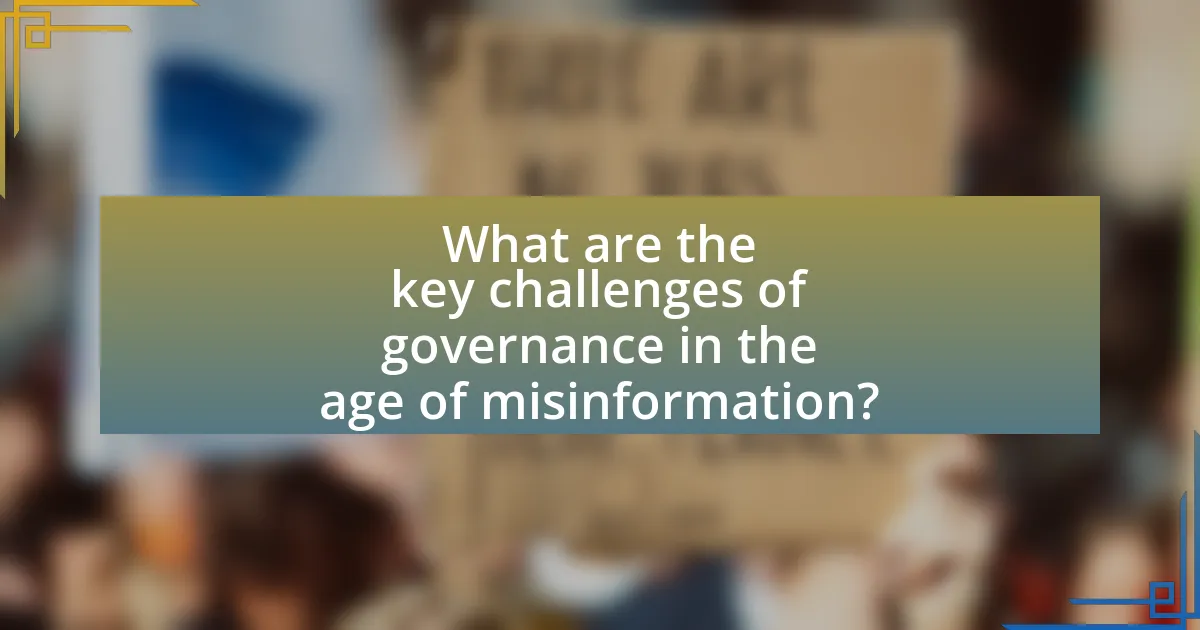
What are the key challenges of governance in the age of misinformation?
The key challenges of governance in the age of misinformation include the erosion of public trust, the difficulty in regulating digital platforms, and the rapid spread of false information. Erosion of public trust occurs as citizens become skeptical of official narratives, leading to decreased compliance with government policies. Difficulty in regulating digital platforms arises from the global nature of the internet, making it challenging for individual governments to enforce laws effectively. The rapid spread of false information is facilitated by social media algorithms that prioritize engagement over accuracy, resulting in misinformation reaching wider audiences faster than corrective measures can be implemented. These challenges complicate the ability of governments to maintain informed citizenry and effective governance.
How does misinformation impact public trust in governance?
Misinformation significantly undermines public trust in governance by creating confusion and skepticism about the intentions and actions of government entities. When citizens encounter false or misleading information, they may question the credibility of official sources, leading to a decline in perceived legitimacy. Research by the Pew Research Center indicates that 64% of Americans believe misinformation has a major impact on their trust in government. This erosion of trust can result in decreased civic engagement, lower compliance with regulations, and challenges in implementing policies effectively.
What are the psychological effects of misinformation on citizens?
Misinformation significantly impacts the psychological well-being of citizens by fostering anxiety, distrust, and confusion. Citizens exposed to misinformation often experience heightened levels of anxiety due to uncertainty about the truth, which can lead to stress-related health issues. Additionally, misinformation erodes trust in institutions and media, as citizens become skeptical of information sources, resulting in a fragmented society where individuals are less likely to engage in constructive dialogue. Research by Lewandowsky et al. (2012) in “Misinformation and Its Correction: Continued Influence and Successful Debiasing” highlights that misinformation can persist in memory, leading to long-term misconceptions that affect decision-making and behavior. This psychological toll underscores the need for effective strategies to combat misinformation and restore public trust.
How does misinformation influence political polarization?
Misinformation significantly influences political polarization by reinforcing existing biases and creating echo chambers. When individuals are exposed to false or misleading information that aligns with their pre-existing beliefs, they are more likely to adopt extreme positions and reject opposing viewpoints. Research indicates that misinformation can lead to increased partisan hostility, as individuals become more entrenched in their beliefs and less willing to engage in constructive dialogue. A study published in the journal “Political Communication” found that exposure to misinformation about political issues correlates with heightened polarization, as individuals selectively process information that confirms their biases, further deepening divisions within society.
What are the implications of misinformation for policy-making?
Misinformation significantly undermines effective policy-making by distorting public perception and eroding trust in institutions. When policymakers rely on inaccurate information, they may implement misguided strategies that fail to address the actual needs of the population. For instance, a study by the Pew Research Center found that misinformation can lead to public support for policies that are not based on factual evidence, resulting in wasted resources and ineffective governance. Furthermore, misinformation can polarize public opinion, making it challenging for policymakers to achieve consensus on critical issues, as seen during the COVID-19 pandemic when conflicting information about health measures led to divided responses among communities.
How does misinformation affect the accuracy of data used in governance?
Misinformation significantly undermines the accuracy of data used in governance by distorting public perception and decision-making processes. When false information circulates, it can lead to misguided policies based on incorrect data, as seen in instances like the COVID-19 pandemic, where misinformation about the virus’s transmission affected public health responses. Studies indicate that misinformation can create a feedback loop, where erroneous data influences governance decisions, which in turn perpetuates further misinformation. For example, a report from the Pew Research Center highlights that 64% of Americans believe misinformation has caused confusion about COVID-19, illustrating its impact on governance and public trust.
What challenges do policymakers face in combating misinformation?
Policymakers face significant challenges in combating misinformation, primarily due to the rapid spread of false information across digital platforms. The decentralized nature of social media allows misinformation to proliferate quickly, making it difficult for authorities to track and address false narratives effectively. Additionally, the lack of clear definitions and legal frameworks surrounding misinformation complicates enforcement actions. Research indicates that 70% of Americans encounter misinformation online, highlighting the pervasive nature of the issue. Furthermore, the challenge of balancing free speech with the need to regulate harmful content poses ethical dilemmas for policymakers, as they must navigate public opinion and potential backlash against censorship.
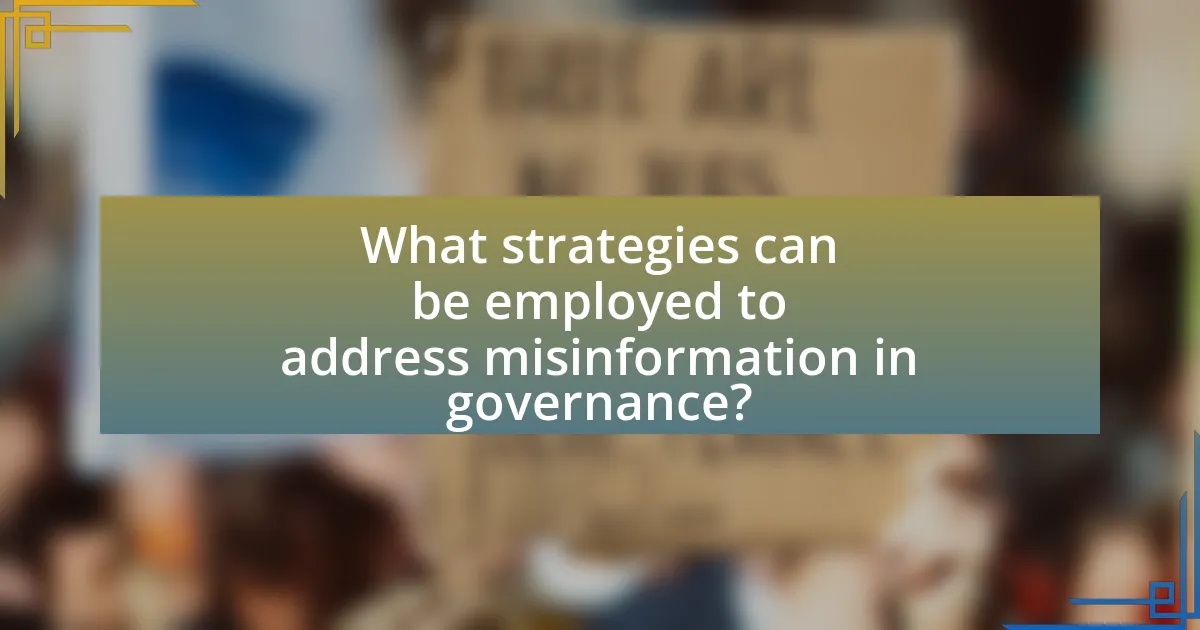
What strategies can be employed to address misinformation in governance?
To address misinformation in governance, implementing fact-checking initiatives and enhancing media literacy are essential strategies. Fact-checking initiatives, such as those employed by organizations like PolitiFact and FactCheck.org, provide verified information to counter false claims, thereby fostering informed public discourse. Enhancing media literacy equips citizens with the skills to critically evaluate information sources, reducing susceptibility to misinformation. Research indicates that media literacy programs can significantly improve individuals’ ability to discern credible information, as evidenced by studies conducted by the Stanford History Education Group, which found that students often struggle to evaluate online information effectively. These strategies collectively contribute to a more informed electorate and strengthen democratic processes.
How can governments enhance media literacy among citizens?
Governments can enhance media literacy among citizens by implementing comprehensive educational programs that focus on critical thinking and digital literacy skills. These programs can be integrated into school curricula and community workshops, ensuring that individuals of all ages learn to evaluate sources, discern credible information, and understand the impact of misinformation. For instance, the Media Literacy Now initiative highlights that states with media literacy education requirements see improved critical thinking skills among students, which is essential in combating misinformation. Additionally, governments can collaborate with media organizations to promote public awareness campaigns that provide resources and tools for identifying false information, thereby fostering a more informed citizenry.
What programs can be implemented to improve critical thinking skills?
Programs that can be implemented to improve critical thinking skills include structured debate programs, inquiry-based learning initiatives, and critical thinking workshops. Structured debate programs encourage participants to analyze multiple perspectives on a topic, fostering analytical skills and reasoning. Inquiry-based learning initiatives promote exploration and questioning, allowing learners to engage deeply with content and develop their evaluative skills. Critical thinking workshops provide targeted instruction on logical reasoning, argument analysis, and cognitive biases, equipping individuals with tools to assess information critically. Research indicates that these programs enhance cognitive abilities and decision-making skills, essential for navigating misinformation effectively.
How can educational institutions contribute to media literacy?
Educational institutions can contribute to media literacy by integrating comprehensive media literacy programs into their curricula. These programs educate students on how to critically analyze media messages, discern credible sources, and understand the impact of misinformation. Research indicates that students who receive media literacy education demonstrate improved critical thinking skills and are better equipped to navigate the complexities of digital information environments. For instance, a study by the Center for Media Literacy found that students exposed to media literacy education showed a 30% increase in their ability to evaluate the credibility of online sources. By fostering these skills, educational institutions play a crucial role in preparing students to engage responsibly with media in an era characterized by misinformation.
What role do technology and social media platforms play in governance?
Technology and social media platforms play a crucial role in governance by facilitating communication, enhancing transparency, and enabling citizen engagement. These platforms allow governments to disseminate information quickly and interact with the public in real-time, which can improve accountability. For instance, during crises, social media has been used to share vital updates and gather public feedback, as seen in the response to natural disasters where platforms like Twitter and Facebook provided timely information to affected communities. Additionally, studies indicate that increased online engagement can lead to higher levels of civic participation, as evidenced by the rise in online petitions and movements that influence policy decisions.
How can technology be leveraged to combat misinformation?
Technology can be leveraged to combat misinformation through the use of artificial intelligence and machine learning algorithms that analyze and verify information in real-time. These technologies can identify patterns of misinformation dissemination, flagging false content across social media platforms and news outlets. For instance, platforms like Facebook and Twitter employ AI to detect and reduce the spread of misleading posts, utilizing fact-checking partnerships to validate claims. Research from MIT shows that false news spreads six times faster than true news on social media, highlighting the need for robust technological solutions to address this issue effectively.
What responsibilities do social media companies have in governance?
Social media companies have the responsibility to ensure the accuracy of information shared on their platforms and to mitigate the spread of misinformation. This includes implementing robust content moderation policies, utilizing fact-checking mechanisms, and promoting transparency in their algorithms. For instance, platforms like Facebook and Twitter have established partnerships with independent fact-checkers to assess the validity of claims made in posts, thereby reducing the dissemination of false information. Additionally, social media companies must comply with legal regulations, such as the European Union’s Digital Services Act, which mandates accountability for harmful content. These responsibilities are crucial for maintaining public trust and fostering a safe online environment.

How can collaboration between stakeholders improve governance in the age of misinformation?
Collaboration between stakeholders can significantly improve governance in the age of misinformation by fostering a unified approach to information verification and dissemination. When governments, private sector entities, civil society organizations, and technology platforms work together, they can create comprehensive strategies that enhance transparency and accountability. For instance, joint initiatives can establish fact-checking networks that leverage diverse expertise, enabling quicker identification and correction of false information. Research from the Pew Research Center indicates that collaborative efforts can lead to increased public trust in information sources, as stakeholders collectively address misinformation challenges. This collaborative framework not only mitigates the spread of false narratives but also empowers communities to engage critically with information, thereby strengthening democratic processes.
What partnerships can be formed to tackle misinformation effectively?
Collaborative partnerships between technology companies, academic institutions, and governmental organizations can effectively tackle misinformation. Technology companies can leverage their platforms to implement fact-checking tools and algorithms that identify false information, while academic institutions can conduct research on misinformation trends and develop educational programs to enhance media literacy. Governmental organizations can create policies that promote transparency and accountability in information dissemination. For instance, the partnership between Facebook and fact-checking organizations has led to a reduction in the spread of false information on social media, demonstrating the effectiveness of such collaborations.
How can governments collaborate with NGOs and civil society?
Governments can collaborate with NGOs and civil society by establishing formal partnerships that leverage the strengths of each entity. Such collaborations can include joint initiatives, funding opportunities, and shared resources aimed at addressing social issues. For instance, the United Nations Development Programme (UNDP) has successfully partnered with local NGOs to implement community development projects, demonstrating the effectiveness of combining governmental authority with grassroots knowledge. This approach not only enhances service delivery but also fosters trust and transparency, which are crucial in combating misinformation and ensuring informed public engagement.
What role do international organizations play in addressing misinformation?
International organizations play a crucial role in addressing misinformation by establishing frameworks for cooperation, promoting best practices, and facilitating information sharing among member states. These organizations, such as the United Nations and the World Health Organization, develop guidelines and initiatives aimed at combating false information, particularly during crises like the COVID-19 pandemic, where misinformation can have severe public health implications. For instance, the World Health Organization launched the “COVID-19 Mythbusters” initiative to counteract misinformation related to the virus, demonstrating the proactive measures taken by international bodies to safeguard public knowledge and health.
What best practices can be adopted for effective governance in this context?
Effective governance in the context of misinformation can be achieved through transparency, stakeholder engagement, and the implementation of robust information verification systems. Transparency ensures that decision-making processes are open and accessible, which builds public trust and accountability. Stakeholder engagement involves actively involving citizens, experts, and organizations in governance processes, fostering collaboration and diverse perspectives. Implementing robust information verification systems, such as fact-checking initiatives and digital literacy programs, helps combat misinformation by equipping individuals with the skills to discern credible information. These practices are supported by studies indicating that transparent governance correlates with higher public trust and that community engagement enhances the effectiveness of governance strategies in addressing misinformation.
How can transparency and accountability be enhanced in governance?
Transparency and accountability in governance can be enhanced through the implementation of open data initiatives and robust oversight mechanisms. Open data initiatives allow citizens to access government information, fostering trust and enabling informed public participation. For instance, the U.S. government’s Data.gov platform provides access to a vast array of datasets, promoting transparency. Additionally, establishing independent oversight bodies, such as ombudsmen or audit institutions, ensures that government actions are monitored and held accountable. Research by the World Bank indicates that countries with strong accountability frameworks experience lower levels of corruption and improved public service delivery.
What are the key takeaways for policymakers in combating misinformation?
Policymakers must prioritize transparency, collaboration, and education to effectively combat misinformation. Transparency involves clear communication about the sources and methods of information dissemination, which builds public trust. Collaboration with technology companies is essential, as platforms can implement better content moderation and fact-checking systems. Education initiatives should focus on media literacy, equipping citizens with the skills to critically evaluate information sources. Research indicates that media literacy programs can significantly reduce susceptibility to misinformation, as shown in studies by the Stanford History Education Group, which found that students often struggle to distinguish credible sources from unreliable ones.

